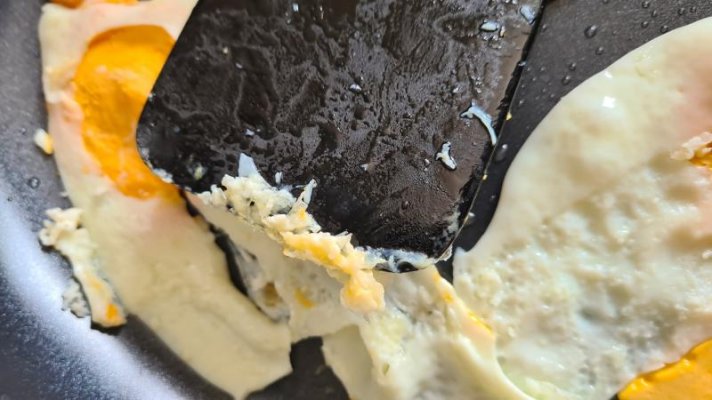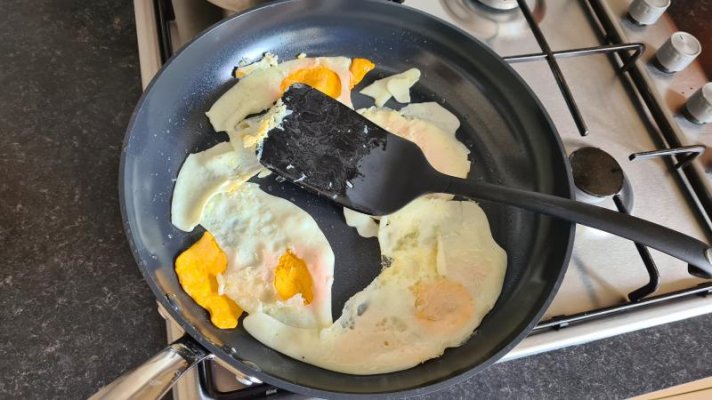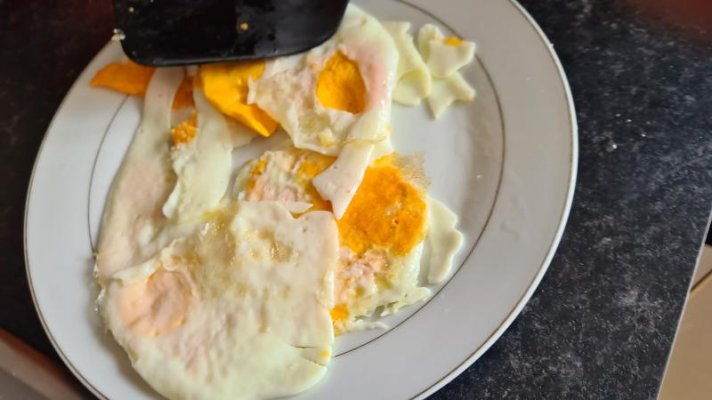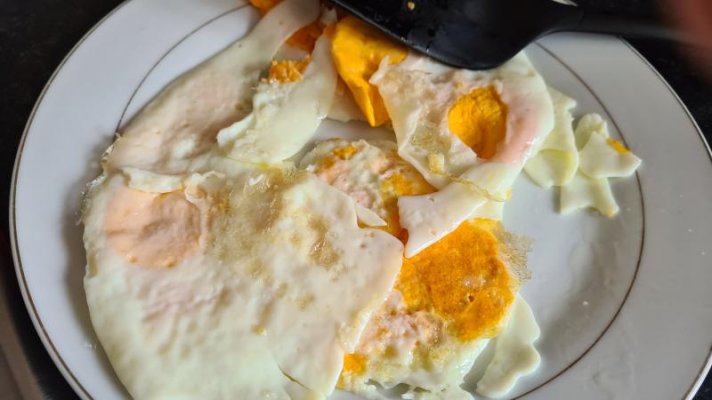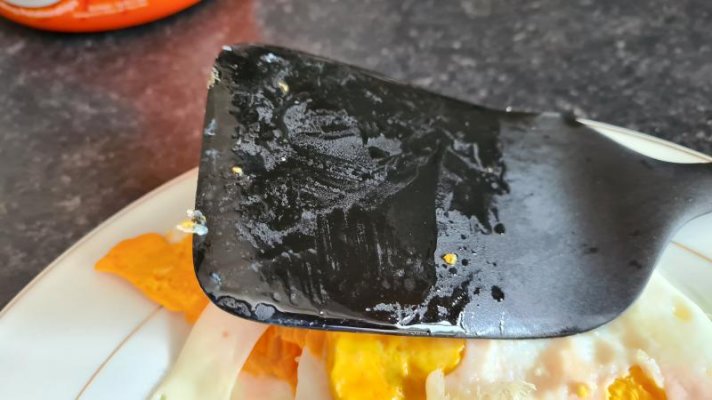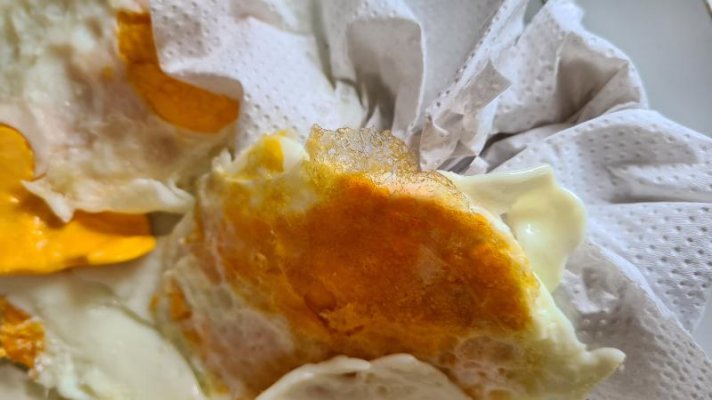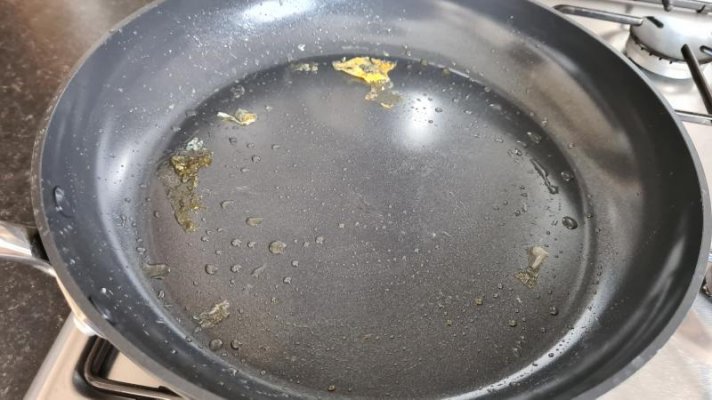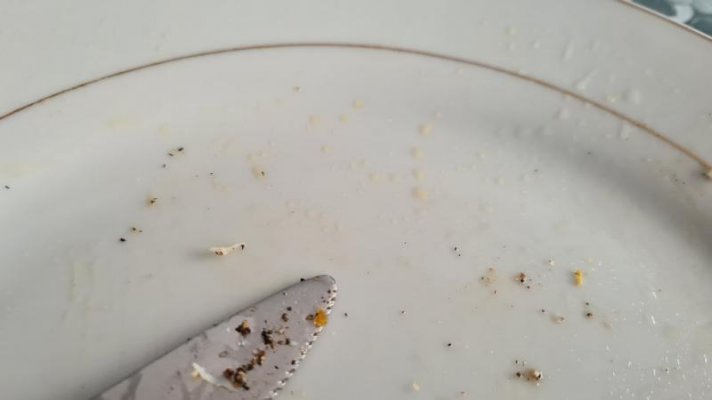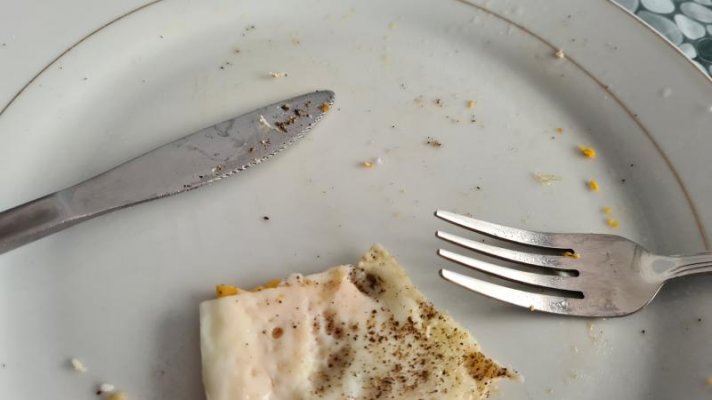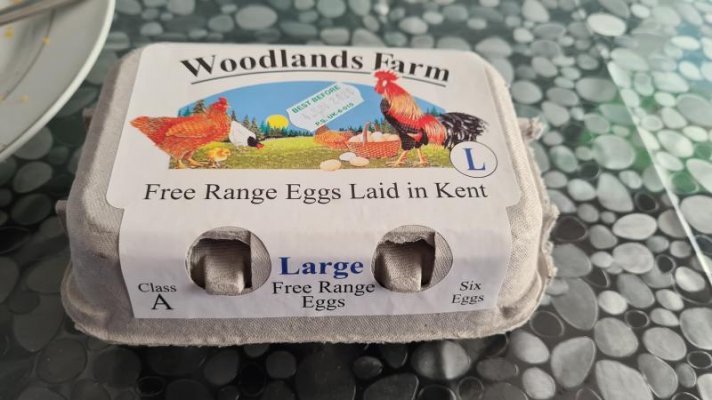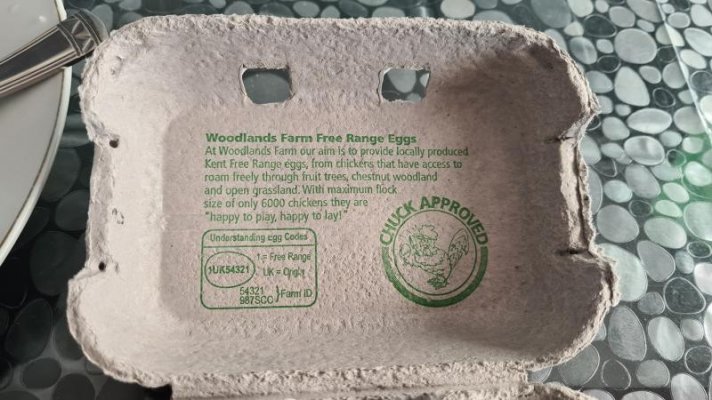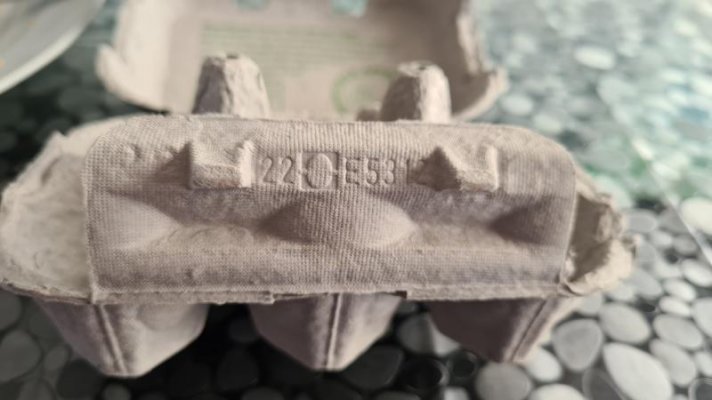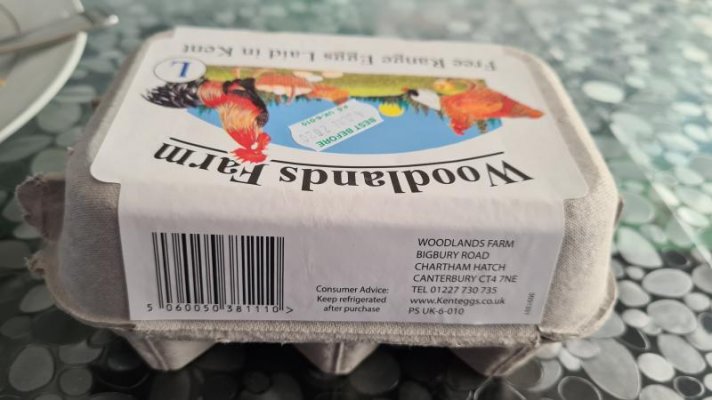after reading the warning to read things closely, I decided to stay out of this one.
but there are a couple things missed or only slightly alluded to which are important.
the first is: why are the egg whites spreading out so thin?
three things come to mind
#1 the pan is not properly preheated. egg whites, like all proteins, tend to 'shrivel up' when exposed to heat - fish curls, chicken balls up, beef shrinks....
plop a batch of eggs in a cool pan and they'll have time to spread out before they set.
#1a those videos? McD is using custom designed thermostatically controlled flattop griddles to cook the eggs. they have spend kabillions getting the design right.
#1b those videos? the water? they are steaming the top of the eggs to cook 'from the top' simultaneously.
a lid has been suggested here - but on careful reading, apparently that is outside the realm of possible.
#2 the pan is simply too big.
#3 you're in UK. are these Lion Seal eggs? if so, there's a date on the carton - which is 28 days from when the chicken laid the egg. as eggs ages, the white gets thinner/less cohesive. if you're close/at/past the 28 day mark (on careful reading I see: "I eat out mostly...") that could explain the extra thin running whites making the rubber binky chew.
if you want to try poached eggs - do you have a small bowl? crack the egg(s) into the bowl, set the bowl in simmering water, start counting. use a lid, if that is within the realm of possible. eventually you may want want to wipe the inside of the bowl with a fat - the white will "stick" to a squeaky clean bowl.
it's not difficult to fry an egg as you like them. however when every suggestion is not possible, you will have difficulty achieving your goal.
Non stick pans should not be preheated. Clearly states so in the instructions of the manual for the pan. You CAN kind of 'preheat' by adding oil. Which is what I do. There is no way to know the temperature of the oil nor do I know the ideal temperature required for the eggs for the second they hit the pan.
Get the oil to hot and when you put the eggs in the bottom will crisp and become hard plastic. Rest of the egg won't have cooked. Too cool is better but not ideal.
McDonald's do it, the navy do it, plenty of people make fried eggs at home. It's not working for me and we have to look at the many variables as to why it's not.
Variables include but I many have missed some:
- Pan
Different pans have different heating efficiency. Mine is very efficient. Heats up like a mother trucker with little heat.
Different pans have different surfaces.
How much nonstick property remains.
- Heat level
- Temperate of the pan just a second before the eggs hit the pan and during. The pan gets hotter and hotter I noticed even on the lowest heat setting. Again. I remind you. I use the large hob.
- Gas hob size
- Fat
I use Oil. Actually I got it wrong. I'm using Filippo Berio Classico olive oil that's IN date. Not Napalonia or whatever it's called.
- Duration per side of egg
- What exact eggs being used and their age
Never said a lid isn't possible. I don't have one for my pan nor is there one in either of the houses we have.
Greenpan, as far as I'm aware, don't sell the lid separately. I think one doesn't exist for this pan.
Prior to buying a lid, we must determine the cause of the issue. Or causes. No point throwing money at it hoping that'll fix it.
As stated in my previous reply, the size of the pan shouldn't matter. Navy, McDonald's use griddles with vast amounts of flat space. Yes I see McDonald's up the rings.
I've also watched many YouTube videos of people cooking fried eggs and they cook them in large pans without issue.
The eggs are locally produced by a farm. The guy who distributes them says they are better than supermarket eggs (then again he would. It's in his interest to). He sells to many local business's. Who then sell to customers. We have a shop so he supplies us with eggs.
They are labelled free range. Class A. Large.
They have a best before date. I'll include a photo on the carton, box whatever it's called.
That's true. The older the egg, the runnier it is. But I've no way of telling I think, how old the eggs are.
Didn't say I want poached. But learning a variety of techniques and therefore cooking methods is important. So I'm happy to learn.
I made them again today.
Same method.
Large hob. Lowest heat.
Olive oil.
4 eggs.
But this time I used a TON of oil. Yet where the oil didn't spread, the eggs still stuck and crisped.
Due to the non stick coating and size on pan, the oil cannot spread evenly everywhere. Instead there are little pools of oil. Some bigger than others. Most of it pools to the edges, so my eggs mostly miss the oil underneath as it doesn't exist, as it's mostly around the sides.
Still I got some crisping.
I tried flipping much earlier today too.
Also it sticks like crazy to my non stick flipper thing. It always has. So I've had to rub it hard when washing it with the green scourer which has scratched off its non stick coating.
I freaking hate cooking eggs. Just trying cook with mostly whites is just as much a nightmare. Mostly whites omelette. Try it.
Photos attached.

